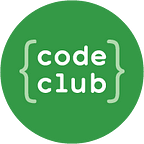Collaborating with CSIRO to celebrate Beef Week 2024
Beef Week is set to take place in Rockhampton from May 5 to 11 this year. It is an event that celebrates the Beef industry and has a vision to promote, advance, and celebrate a sustainable beef industry worldwide. It celebrates all facets of the industry, including producers, scientists, chefs, students, exhibitors, and everyone in between.
Code Club Australia has collaborated with CSIRO, Australia’s national science agency, to create our latest project called Virtual Fences. This project highlights research that focuses on using technology to create virtual fences as a more welfare-friendly solution to electric fences on cattle farms. Our coding project uses Scratch to showcase this technology and to learn some coding techniques in the process.
The coding project is great for students from year 3 through to year 6. Young people will learn to create an animation that shares knowledge through a story. The coding blocks used in the project highlight the use of loops to create repetition, as well as motion, sound, and speech blocks to help tell the story.
To ensure the project accurately showcased the technology created by CSIRO, Code Club Australia worked with Dr Caroline Lee, a senior researcher on the virtual fencing work. At CSIRO she is a Senior Principal Research Scientist who focuses on Animal Behavior and Welfare in her work.
The Science behind the project
This latest coding project showcases new technology that was invented by CSIRO. Virtual fencing is a welfare-friendly technology where cattle wear solar-powered neckbands that contain GPS, wireless technologies, and sensors. The farmer creates a virtual fence boundary on their smart phone, tablet or computer, which connects to the neckband via a tower.
If the animals go near the virtual fence as they’re grazing, the system gives them a beep. If they continue walking in the same direction, they get a small electric pulse. Over a short period of time (usually a few hours), the cows learn to turn away when they hear the beep. If they do go as far as receiving the pulse, it’s a lot less than the shock of an electric fence.
Making the system so that the cattle learn quickly to respond to the beep to minimise stress and ensure their welfare has been an important part of CSIRO’s research. Current research on virtual fencing is looking at how cows respond to the beeps and pulses, and how it might be adapted for other livestock, and for managing weeds. To read more about the project you can read the CSIRO blogs ‘Turns out you can teach old (and young) cows new tricks’ and ‘Virtual Fencing’.
We look forward to hearing what coders think of the project!
Happy coding!
Kaye
Manager, Code Club Australia
